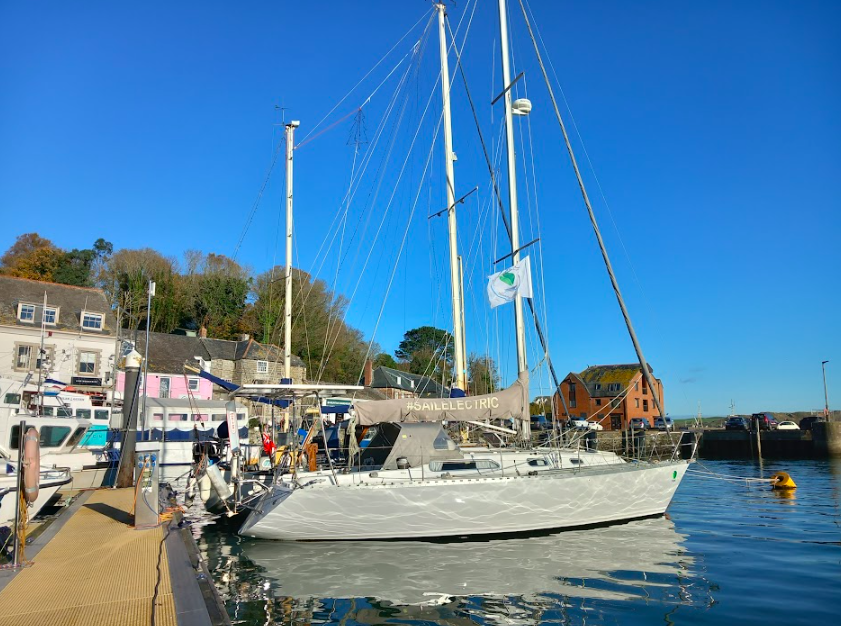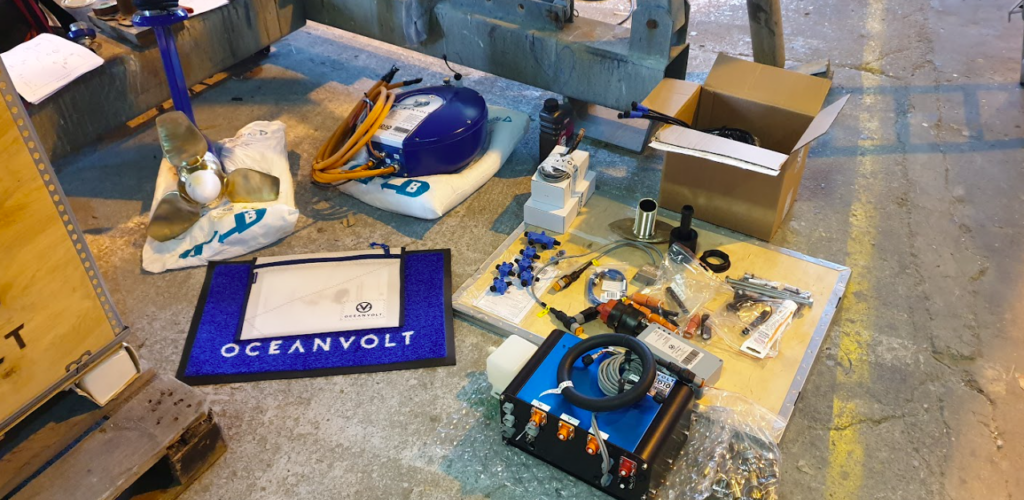
In Focus: UK electric retrofit specialist urges policy changes to speed transition
According to Wayne Peters, a passionate ocean advocate (who runs Sail Electric, the engineering division of the North Devon Marine Project): “Policy standards and training will be critical elements to accelerating the transition [to electric].”
Peters (pictured above) is calling for the marine industry to really focus its agenda on sustainable sailing practice while fostering a mindset to protect ocean health.
He’s already made the jump, and made his business out of it too. Sail Electric, which he’s headed since 2019, transforms large sailing vessels by retrofitting electric engines, and trains owners and operators on how to achieve the best results.
It’s proving a successful business model. “We have a full order book and we will streamline and optimise the process with a focus on spreading consultancy expertise,” says Peters. The company collaboratively works with a wide network of global partners to develop and enhance boatbuilding and technologies with the aim to rapidly decarbonise and improve processes across the industry.
Peters believes, for that to happen, knowledge is key.

“The everyday marine engineer needs to have a clear and informed means to access the design and placement of cleaner technology. There are great options out there that should be commonplace in the industry by now. This technology is well proven.
“It is not so much whether electric motors work, it is which one. Electric motors, even if they are supported by a diesel generator set, are profoundly more efficient. Running on electric in and out of the dock also has significant benefits for the marine environment in coastal sites.”
Peters heads off the question of whether a lithium battery and electric motor are more sustainable than only using a litre or two of fuel per hour sailing. “Currently,” he says, “it [lithium phosphate technology] is the only reasonable energy storage alternative for the everyday boater who converts. You need good quality equipment, as with anything subjected to the harsh environment at sea. With product development come standards and accountability, actions to combat the carbon. This technology can be both upcycled and recycled, but it needs support and incentivising if we are to deliver power at sea for when we need it, and at no cost to the earth.”
Plus, he says: “[Electric] motor lifespan is far greater than a combustion engine. The motors in our projects have a 50,000-hour life expectancy, compared to 5,000 to 8,000 for common inboard diesels. If we are to rely on diesel during the transition, it should be used optimally and for as little time as possible. One or two litres an hour might not sound much, but consider the cumulative and direct impact of diesel as a primary source of power.
“With hydrogen concepts now in action, and more programmes developing globally to better the energy storage, we can expect interesting times ahead. Given the typical duty cycle on an electric, or hybrid electric, sailing yacht, many can manage with a combination of solar and shore power (and the combination of renewable sourced stored power, be it in batteries, hydrogen or a combination of both). We typically expect 20+ years for a LiFePO4-based battery storage system, and given the change in mindset, and geared to our focus on sail powered vessels, the power delivery system does not need to work as hard as say an EV.”
Peters is a keen advocate of collective ambition. “There is so very much to do and in such a short time, we have to continue to actively endorse and rapidly evolve the ethos, technology and crucially the methodology for sustainable sailing,” he says. “Supporting the process and developing green tech that is safe, durable, easy to use and efficient, providing the tools and the training and resources for widespread adoption, is our primary objective”.
Retrofit electric sail boat on tour
In order to help this, Peters will be touring Nazca (his 100 percent retrofitted electric cruiser/racer), later in the year. He’ll call into as many ports and harbours as he can in order to fly the flag for electric retrofit know-how and sustainable sailing.

“We run training, workshops, live demonstrations and research and development on all of the methods and products we use to inspire confidence and also confidence in next generation technologies,” he says.
“There’s nothing like first-hand experience, to demonstrate the capabilities and positives of green tech. Nazca, a Contessa 34 Offshore One Design, runs an Oceanvolt Servoprop. As a 100 per cent electric cruiser/racer, we use her to showcase the technologies and our methods. There is a plethora of tech on board to monitor the boats’ performance, her hull has a non-biocide foul release system, and we analyse our cumulative impact through microplastic trawling and benthic sampling that helps raise awareness.”
Nazca holds some of the longest running hours for electric cruising, and with Peters currently looking to adopt hydrogen into the mix, he believes it is a shining example of a marine pathway towards net zero.
Peters isn’t shy about being the UK agent for Oceanvolt. As well as his own, he says: “Their systems power Spirit Yachts, X-Yachts, Rustlers, Baltics, Arconas, Swans, Contessa’s and a Southerly.” The latter is being prepared for the Cat One ocean race, to the Azores and back, that Peters and the Southerly‘s owner have entered, truly testing the technology and method.

“Their [Oceanvolt’s] key message completely fits the Sail Electric brief, by seeking 100 per cent electric sailing. There is a longstanding relationship with Victron Energy too, with whom we share a great deal of synergy, networking our entire fleet, and we collaborate with developers, suppliers, boatbuilders and marine engineering companies globally to help clients to transition faster.”
Regeneration under sail
Peters says he’s going to be involved in some on-the-water testing with hydrogen, to offer a real insight into how this technology can evolve, working with more like-minded designers and developers to achieve a leave-no-trace yacht. In the meantime he’s delighted with Nazca’s current stats.
“With regeneration under sail, above 6 knots, we can reliably pull 400–500 Watts. when we are fully powered-up, a constant 800W is achieved. In some exuberant sailing with a lot of canvas up, Nazca can hit 1kW in regeneration mode, impressive for a waterline of 8.8m. Combined with 1,000W of bifacial solar on the stern, her range, managed well, is theoretically unlimited given planning and patience. The solar can push the boat along at 3-3.5knt (and more) with the main up in the right conditions.
“The system is fully integrated, multiple screens show performance, time to go and status, all in unison with the ships navigation and monitoring with online historical monitoring available. The boat runs from a CANbus network for all the information needed and more, directly at our fingertips. It’s the access to this advanced level of monitoring that enables the change of approach. We’ve come a long way since the traditional diesel engine, and with that comes a new learning curve for us all.”
The post In Focus: UK electric retrofit specialist urges policy changes to speed transition appeared first on Marine Industry News.
